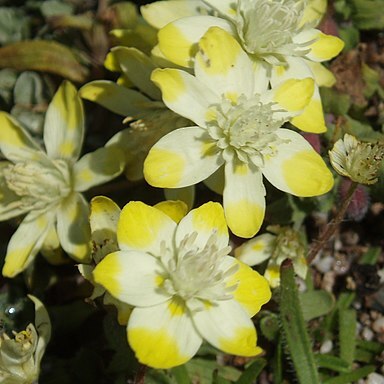An annual poppy. It can be erect or spreading. It grows 30 cm high and spreads 10 cm wide. The leaves are arranged in rings. They are narrow and oblong and 8 cm long. The flowers are open and have 6 petals. The stamen are prominent. The flowers can be cream or yellow. The flowers occur singly on short, hairy stems.

